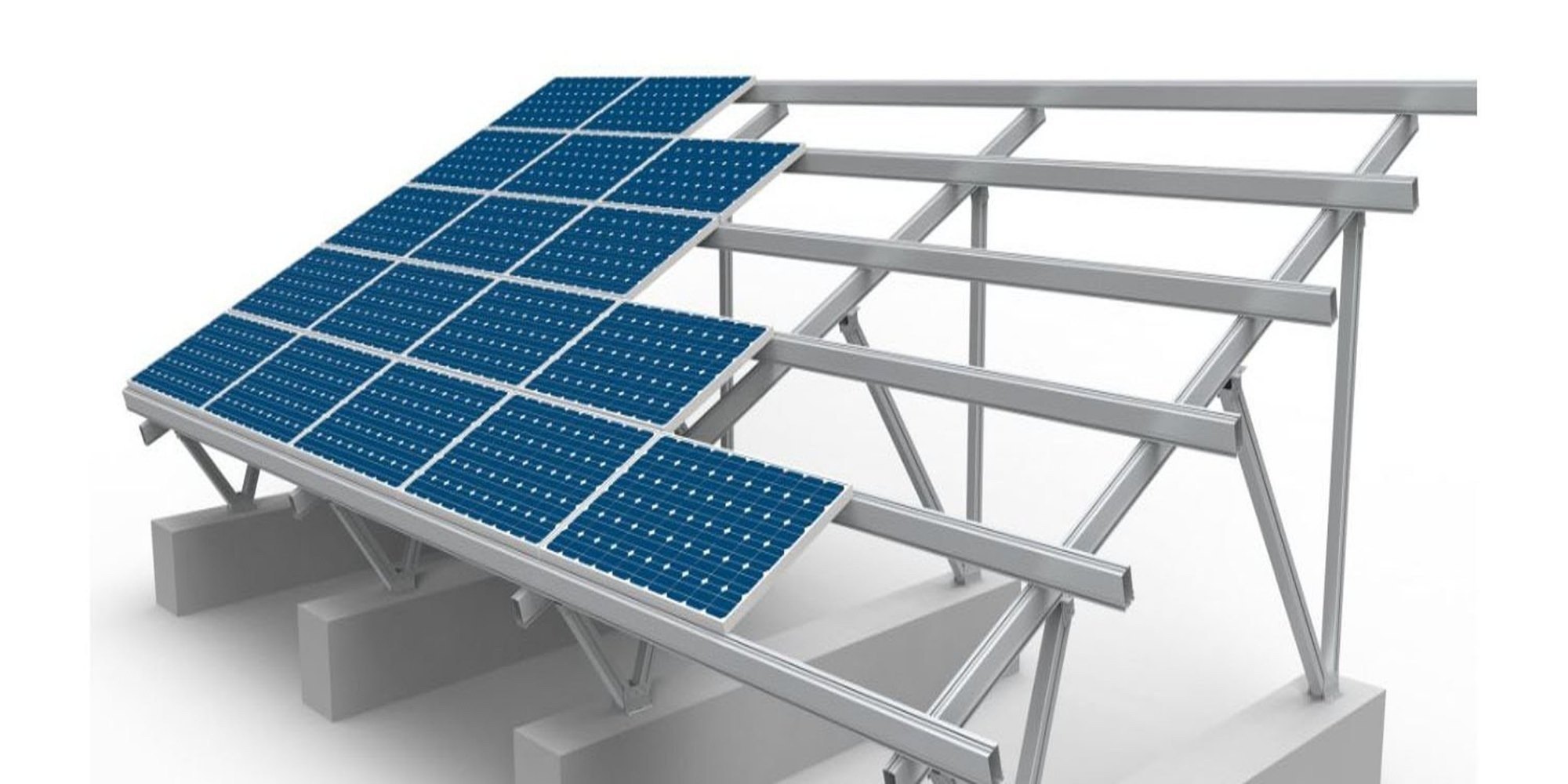In every solar power system, the Module Mounting Structure (MMS) plays a crucial role — it supports the solar panels, maintains the correct tilt, and ensures long-term durability against wind, corrosion, and environmental stress.
While panels and inverters often get more attention, a well-designed MMS is the backbone of a stable and efficient solar project. This guide explains the technical specifications, materials, and design considerations for MMS in India.
What Is a Module Mounting Structure (MMS)?
A Module Mounting Structure is a mechanical framework that holds solar panels at a specific angle and direction to maximise sunlight exposure and ensure stability under varying conditions like wind and seismic loads.
It is designed based on:
• Site type (rooftop, ground-mount, or carport)
• Module size and layout
• Wind and load conditions
• Type of foundation or roof surface
Key Technical Specifications:
a. Material:
• Galvanised Iron (GI) – Most common and economical; offers good corrosion resistance.
• Aluminium (Al) – Lightweight, corrosion-proof, ideal for rooftops.
• Mild Steel (MS) with Hot Dip Galvanisation (HDG) – Used in large projects for strength and durability.
• Stainless Steel (SS) – Used in coastal or high-humidity zones for maximum corrosion protection.
Recommended:
• HDG thickness: Minimum 80 microns (as per IS 4759) for outdoor applications.
• Aluminium alloy: 6063-T6 or 6005A-T6 grade for structural components.
b. Design Standards:
MMS must comply with Indian and international standards, such as:
• IS 800:2007 – General Construction in Steel.
• IS 875 (Part 3):2015 – Wind Load Calculations.
• IS 2062:2011 – Structural Steel Material Specification.
• IS 4759:1996 – Hot Dip Galvanisation.
• IEC 62548 – Photovoltaic (PV) system installation guidelines.
Types of Module Mounting Structures:
a. Rooftop MMS:
• Fixed tilt or adjustable tilt.
• Typically made of aluminium or lightweight GI.
• Mounted with ballast blocks or chemical anchors.
b. Ground-Mounted MMS:
• Made of hot-dip galvanised steel.
• Mounted using pile, RCC foundation, or screw anchors.
• Suitable for large-scale solar farms.
c. Carport / Elevated MMS:
• Dual purpose — provides parking shade and supports panels.
• Requires a stronger beam-column design and corrosion protection.
d. Tracker Systems:
• Single-axis or dual-axis trackers adjust panel angles automatically to follow the sun.
• Improves energy yield by 15–25%.
• Requires robust actuator and control system integration.
Foundation & Fastening:
• Ground-mount: Pile-driven, screw pile, or concrete foundation.
• Rooftop: Anchor bolts, clamps, or ballast blocks (non-penetrative).
• Material: Use SS bolts and nuts for anti-rust performance.
Corrosion Protection & Coating:
• Use hot-dip galvanised steel with a minimum of 80 microns zinc coating.
• For coastal areas, coating thickness may be increased to 100–120 microns.
• Aluminium structures may use anodised coating (minimum 10 microns).
Installation & Maintenance Guidelines:
• Ensure perfect alignment for all module rows to prevent mismatch losses.
• Tighten all fasteners with torque as per the design specification.
• Regular inspection for rust, loose bolts, or foundation damage.
• Clean mounting structures periodically in dusty or salty environments.
Conclusion:
The Module Mounting Structure (MMS) is a critical part of any solar installation — it defines the safety, stability, and lifespan of your system.
By using high-quality materials, following IS and IEC standards, and ensuring proper installation, project developers can significantly improve system reliability and performance.




